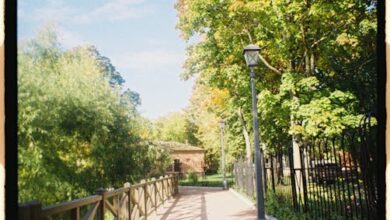The Dual Life of the Modern Engineer: Where Passion Meets Purpose
Ever feel like you’re living a double life? By day, navigating the complexities of corporate leadership, driving teams, and shipping products that redefine industries. By night, diving into personal projects, experimenting with cutting-edge tech, and building entirely new things from the ground up, just because you can. This isn’t just a fantasy; it’s the reality for many modern engineers, and it’s a powerful dynamic that positions them perfectly to thrive in today’s rapidly evolving tech landscape. In fact, if you’re an engineering manager by day and a solo innovator by night, I genuinely believe this is the best time you’ll ever have to build.
There’s a unique synergy that emerges when you blend professional rigor with unbridled personal curiosity. It’s about leveraging the best of both worlds: the structured problem-solving from your day job and the creative freedom of your personal playground. Let’s unpack why this dual identity isn’t just sustainable, but incredibly potent for innovation.
The Dual Life of the Modern Engineer: Where Passion Meets Purpose
Imagine steering the ship for a leading audio products division, guiding complex Audio-over-IP solutions from initial concept to market release. That’s the daytime reality, focusing on incredible scope, technical challenges, and collaborating with brilliant teams. It’s about vision, execution, and delivering professional-grade solutions that push boundaries.
But when the corporate day ends, a different kind of work begins. The suit comes off, and the tinkerer emerges. For many, this means running a hobby venture like DS Apps, developing context-aware Android applications, open-source projects, and even Chrome extensions. It’s a completely free playground where the latest technologies are explored, and products are shipped not for profit, but for the sheer joy of creation.
The common thread? A profound love for building. There’s something deeply satisfying about transforming an idea into a tangible product and seeing it used by real people. This isn’t just about code; it’s about solving problems, experimenting without constraints, and keeping your technical edge sharp in an ever-changing world.
From Dismantling Radios to Disrupting Markets: The Journey of a Builder
My own journey into tech didn’t start with elegant algorithms; it began with destruction. As a kid, I was obsessed with tearing apart old radios, fueled by a raw curiosity about how things worked. Apologies to Grandma for that unceremonious dissection of her radio, but sometimes, understanding requires a bit of deconstruction first.
My formal entry into software, after an Electronics & Communication Engineering degree, was equally circuitous. I almost failed out of my first software training program. It wasn’t until I realized that software wasn’t about memorizing syntax, but about understanding a new language, that everything clicked. C and C++ became my fluency, and I dove in headfirst.
I was fortunate to have technical leaders who were not only brilliant but also incredibly supportive. They taught me to translate business logic into products, often working alongside me until the early hours, even bringing food. Those intense 15-16 hour days weren’t just about coding; they were about forging bonds, proving skills, and truly understanding the craft. This foundational period, marked by both struggle and dedicated mentorship, transformed me from a near-failure into a genuine builder.
The HackerNoon Effect: Quality Over Quantity
This commitment to quality and rigorous learning extends beyond the workplace. Take HackerNoon, for example. My first story got rejected, and the editor’s feedback was tough, almost harsh. But that initial disappointment quickly morphed into understanding. HackerNoon isn’t just a platform; it’s a technical forum with an exceptionally high bar, where content undergoes a form of peer review. Leaders from major tech companies engage deeply with the material, offering genuine insights, not just superficial comments.
That editorial strength, combined with incredible distribution, means that when you ship something on HackerNoon, it truly resonates. It forces you to write with precision and substance, bridging the gap between mere hype and practical engineering reality. This same drive for quality and impact informs my personal projects and open-source contributions.
The Solo Innovator’s Superpower: Why Now is Unprecedented
Here’s where the “best time to build” truly comes into focus. We are living in an era where the internet’s greatest strengths – knowledge sharing and open-source communities – have converged with a powerful new catalyst: AI. The sheer volume of shared information, the ability to build upon others’ work, and the incredible feedback loops from a global audience are unparalleled.
One comment from a user in Indonesia, translated, once gave me an insight for an app that I never would have discovered otherwise. That global reach, that instant connection to people solving real problems halfway around the world, is truly mind-blowing. The democratization of knowledge empowers everyone.
And now, with AI tools and coding agents, a solo developer can genuinely compete with entire companies. You can create your own virtual company, test ideas at lightning speed, and ship real products with an efficiency that was unimaginable just a few years ago. It’s no exaggeration to say that this period marks an explosion for individual innovation. The barriers to entry for bringing an idea to life have never been lower.
Building for the Edge and Beyond: The Future is Local
This is why my current focus is split into two exciting tracks. First, I’m relentlessly exploring how to use AI as a power tool in the development process itself. It’s not just about clever prompts; it’s about understanding the strengths and limitations of different AI models, architecting solutions, and leveraging AI coding agents effectively. It’s about building with AI.
Second, I’m building AI-powered products that run on edge platforms – your mobile phone, local devices – without constant cloud connectivity. There’s an elegance to AI that lives where the user is, respecting privacy and functioning offline. My goal is always to solve real problems with AI, not just play with the technology for its own sake. And as I learn, I share everything, because the more people who can effectively use these tools, the more innovation we’ll all see.
Investing in Tomorrow: Education, Innovation, and a Spectrum of Possibilities
If given $10 million, my investment would be clear: education. Specifically, preparing the next generation for an AI-transformed workforce. We need to teach kids not just how to use AI, but how to build with it, think critically about it, and create new opportunities. This also extends to empowering small businesses, giving them access to the same cutting-edge tools and capabilities that larger enterprises enjoy, either free or heavily subsidized. Innovation doesn’t just come from established players; it springs from entrepreneurs and builders taking risks.
My view of utopia isn’t limited to a single color, but a full spectrum – a diversity of thought, approaches, and possibilities. This philosophy applies equally to building. We need a broad palette of ideas and perspectives to solve the complex problems of our time. And while AI is an incredible tool, the fundamentals of software engineering, understanding architecture, and making informed trade-offs will never go away. AI helps you achieve things faster, but the core knowledge? That’s always yours to own.
The Era of the Empowered Builder
We stand at a crossroads where professional experience, personal passion, and unprecedented technological access converge. The engineering manager by day brings a wealth of structured problem-solving, team leadership, and product lifecycle expertise. The solo innovator by night brings unbridled curiosity, rapid experimentation, and the agility to ship. Marry these two, add the democratizing power of open source and AI, and you have a force multiplier for innovation.
This isn’t just a good time to build; it’s the most exciting time. Whether you’re leading a team or coding solo, the opportunities to create, share, and impact the world are boundless. So, embrace the dual life, keep tinkering, keep learning, and keep building. The future of innovation is being written by people just like you.





